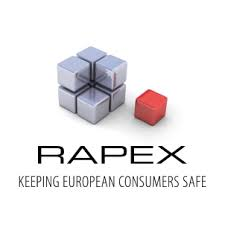Informazione tecnica HSE / 25 ° anno
/ Documenti disponibili:
45.559
/ Documenti scaricati: 34.447.824
/ Documenti scaricati: 34.447.824
Brusseles 25.04.2017
Orgalime welcomes the opportunity to comment on the evaluation of the Product Liability Directive (Directive 85/374/EEC). The Directive, thanks to its technology-neutral provisions, has created legal certainty while enabling technological development over the past years. Orgalime does not see a need to revise this Directive at this point in time.
The Product Liability Directive is fit for purpose and will continue to meet its objectives of striking the right balance, in terms of liability, for damage caused by a defective product in a fair way.
The product liabilty directive - still fit for purpose
Under the Directive, in case a defective product causes damage to the property of consumers or personal injury or death, the producer has to provide compensation according to strict liability. Under the Directive, it remains the task of the injured party to prove the defect, the damage and the causality link between the damage and the defect.
As the Product Liability Directive does not require the injured party to establish negligence, it provides a level of ease for the damaged party to claim for damages. Meanwhile, the producer is provided certain safeguards under article 7 limiting liability in such events where damage arises or is related to obvious circumstances beyond the control of a producer exercising due care. Orgalime finds that the Product Liability Directive strikes an operative balance between the interests of the
producers and those of the consumers. The level of certainty provided by the Directive contributes to company risk management policies and also helps insurance valuation.
Orgalime further notes the importance of time period limitations, value thresholds for property damage and delimitation of property damage to private property set forth in the Directive. Orgalime
finds that for the purposes of maintaining a fair and balanced product liability regime, it is important to maintain these delimitations, noting however that the Directive may not affect any rights which an injured person may have according to the rules of the law of contractual or non-contractual liability or such special liability systems existing at the moment when the Directive was initially notified.
Orgalime finds that the Directive, as an essential and technology-neutral part of the framework of liability legislation, is fit for purpose. Orgalime however recognizes that Products are evolving and therefore finds the Commission's review of the Directive timely and appropriate.
It has to be noted that, already now, every specific case needs to be carefully analysed to decide who is liable vis-a-vis the consumer, for instance when different components are assembled. When necessary, it has been and will be always up to the judge, with the support of technical experts, to decide in the specific case.
Fonte: Orgalime
The European legal framework is a complex and comprehensive array of legislation based on both specific mandatory public order legislation and civil law. Besides the Product Liability Directive it includes product safety legislation such as the Machinery Directive (Directive 2006/42/EC), the Low Voltage Directive (LVD) (Directive 2014/35/EU), the General Product Safety Directive (GPSD – Directive 2001/95/EC) and safety at work directives. Such legislation aims to ensure the safety of products used by workers and consumers by rendering the manufacturer liable for the safety of products placed on the market. In spite of an approach which is more intricate than the one used in similar economies such as the USA, Europe has, through its existing, finely tuned and stable regulatory framework, been successful in reducing accident rates to comparable levels, while still enabling European companies to remain competitive on global markets.
Conclusions
Given the complexity of future products and level of autonomy, the task of attributing a particular damage to a defect will become increasingly difficult. Orgalime finds that the answer to this problem
will not be resolved in legislation alone, but more in the supply chain of new innovative products and services. It is more and more important to consider contractual and non-contractual liability at the very beginning of each automation or IoT venture, and to find meaningful ways to cover them contractually by using existing regulations and applying relevant legal principles. In the world of complex devices and services, additional flexible contract solutions will be needed in case unpredictable circumstances arise. Orgalime emphasizes that product liability can also be based on the breach of an express or implied contractual term concerning the quality or safety of a product.
Orgalime finds that technical solutions are needed. In automated devices where risks that property or personal damage may occur, data recording and storage devices will most likely be installed in order to establish the chain of events that resulted in causing the damage. Sector specific standards will likely be needed to address what is the minimum set of data needed to establish liability.
In the past thirty years, the Product Liability Directive has ensured legal certainty while enabling technological development in Europe, enabling the European engineering industries to innovate and develop new technologies and remain competitive. Going forward, Orgalime would like the Directive to keep true to its aim of striking a fair balance between the different interests involved.
Rettifica del regolamento (UE) 2017/745 del Parlamento europeo e del Consiglio, del 5 aprile 2017, relativo ai dispositivi medici, che modifica la diret...

Report 10 del 08/03/2019 N. 3 A12/0393/19 Paesi Bassi
Approfondimento tecnico: Hoverboard
Il prodotto, di marca RUOTE, modello S1 (caricabatterie...

Direttiva delegata (UE) 2021/647 della Commissione del 15 gennaio 2021 che modifica, adeguandolo al progresso scientifico e tecnico, l’allegato III della direttiva 2011...
Testata editoriale iscritta al n. 22/2024 del registro periodici della cancelleria del Tribunale di Perugia in data 19.11.2024